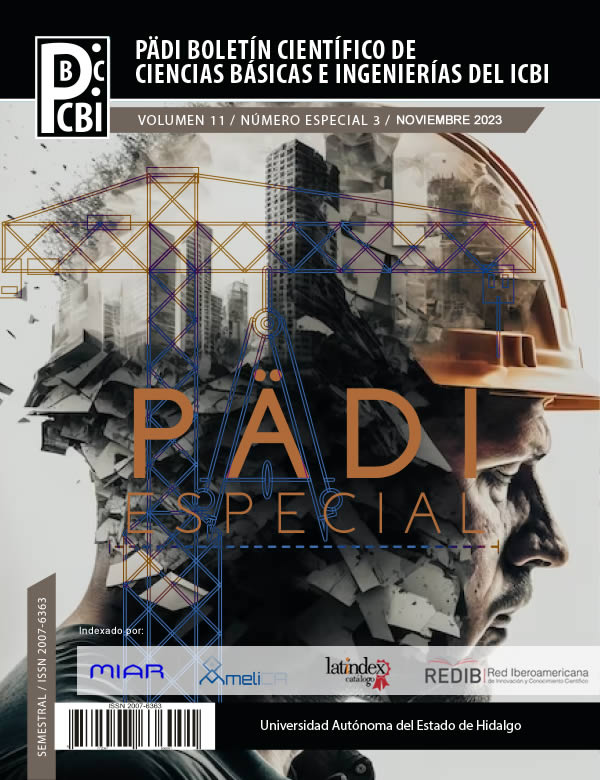Metaheuristic optimization algorithm inspired by the LIFE cellular automata
Abstract
Since there is an excellent variety of optimization problems, the idea of designing a new method inspired by the dynamic behavior of cellular automata has been taken, adapting the evolution rules of well-known cellular automata called the game of life or LIFE to implement them now with vectors of real values, performing in a relevant way the exploration and exploitation actions in the global optimization process. The algorithm was tested through a comparative study using a metaheuristic recognized for its performance and recently published: The Continuous-state Cellular Automata Algorithm (CCAA). For the study, libraries of test functions recognized by the scientific community were used to evaluate its performance. It was verified by data comparison that the proposed algorithm could compete and, in some cases, improve the solution sought, concluding that the proposed rules have a very acceptable degree of efficiency with the compared algorithm.
Downloads
References
Adamatzky, A. (Ed.). (2010). Game of life cellular automata. London: Springer.
Agustín, J. L. (1998). Aplicación de algoritmos genéticos al diseño óptimo de sistemas de distribución de energía eléctrica. Zaragoza.
Bansal, J. C., Singh, P. K., Pal, N. R. (Eds.). (2019). Evolutionary and swarm intelligence algorithms (Vol. 779). Cham: Springer.
Biedrzycki, R., Arabas, J., Warchulski, E. (2022, July). A version of nl-shade-rsp algorithm with midpoint for cec 2022 single objective bound constrained problems. In 2022 IEEE Congress on Evolutionary Computation (CEC) (pp. 1-8). IEEE.
Bilan, S. M., Bilan, M. M., & Motornyuk, R. L. (Eds.). (2020). New methods and paradigms for modeling dynamic processes based on cellular automata. United States America byIGI Global.
Brú, M. V. M., Fleites, G. L., & Barroso, E. M. (2004). Una comparación de dos métodos de gradiente en el Escalamiento Multidimensional. Ciencias Matemáticas, 22(1), pp. 44-53.
Conway, J. (1970). The game of life. Scientific American, 223(4): 4.
Eppstein, D. (2010). Growth and decay in life-like cellular automata.Game of Life cellular automata, pp. 71-97.
Garcia, J. B. C., Gomes, M. A. F., Jyh, T. I., Ren, T. I., Sales, T. R. M. (1993). Nonlinear dynamics of the cellular-automaton ‘‘game of Life’’.Physical Review E, 48(5): 3345.
Glover, F. (1986). Future paths for integer programming and links to artificial intelligence. Computers & Operations Research, 13(5), pp. 533-549.
Gogna, A., Tayal, A. (2013). Metaheuristics: review and application. Journal of Experimental & Theoretical Artificial Intelligence, 25(4), pp. 503-526.
Gosper, R. W. (1984). Exploiting regularities in large cellular spaces. Physica D: Nonlinear Phenomena, 10(1-2), pp. 75-80.
Hassanien, A. E., Emary, E. (2018). Swarm intelligence: principles, advances, and applications. CRC Press.
Kotyrba, M., Volna, E., Bujok, P. (2015). Unconventional modelling of complex system via cellular automata and differential evolution. Swarm and Evolutionary Computation, 25, pp.52-62.
Kumar, K., Davim, P. J. (Eds.). (2020). Modern Manufacturing Processes. Woodhead Publishing.
Lameda, F. M., Agustín, J. L. B. (2010). Diseño Multiobjetivo y Multietapa de Sistemas de Distribución de Energía Eléctrica Aplicando Algoritmos Evolutivos. Universidad de Zaragoza, Zaragoza.
Li, X., Wu, J., Li, X. (2018). Theory of practical cellular automaton. Berlin/Heidelberg, Germany: Springer.
Lozano, D., Velázquez, F., Zepeda, A. (2010). Optimización estructural de forma en el diseño de cavidades en elementos planos mediante algoritmos evolutivos. Mecánica Computacional, 29(12), pp. 1143-1159.
McIntosh, H. V. (2009). One dimensional cellular automata. Luniver Press.
Ramos, A., Sánchez, P., Ferrer, J. M., Barquín, J., Linares, P. (2010). Modelos matemáticos de optimización. Publicación Técnica, 1.
Salcido, A. (Ed.). (2011). Cellular automata: Innovative modelling for science and engineering. John Wiley & Sons. pp. 55-60.
Seck-Tuoh-Mora, J. C., Hernandez-Romero, N., Lagos-Eulogio, P., Medina-Marin, J., Zuñiga-Peña, N. S. (2021). A continuous-state cellular automata algorithm for global optimization. Expert Systems with Applications, 177: 114930.
Shi, Y., Eberhart, R. C. (1999, July). Empirical study of particle swarm optimization. In Proceedings of the 1999 congress on evolutionary computation-CEC99 (Cat. No. 99TH8406) 3, pp. 1945-1950. IEEE.
Valencia, P. E. (1997, August). Optimización mediante algoritmos genéticos. In Anales del Instituto de Ingenieros de Chile, 109 (2), pp. 83-92.
Van den Bergh, F., Engelbrecht, A. P. (2006). A study of particle swarm optimization particle trajectories. Information sciences, 176(8), pp. 937-971.
Van den Bergh, F., & Engelbrecht, A. P. (2010). A convergence proof for the particle swarm optimiser. Fundamenta Informaticae, 105 (4), pp. 341-374.
Wolpert, D. H., Macready, W. G. (1997). No free lunch theorems for optimization. IEEE transactions on evolutionary computation, 1(1), pp. 67-82.
Yang, X. S. (2010). Engineering optimization: an introduction with metaheuristic applications. John Wiley & Sons.
Copyright (c) 2023 Omar López-Arias, Juan Carlos Seck-Tuoh-Mora, Norberto Hernández-Romero, Joselito Medina-Marín, Genaro Juárez Martínez

This work is licensed under a Creative Commons Attribution-NonCommercial-NoDerivatives 4.0 International License.













